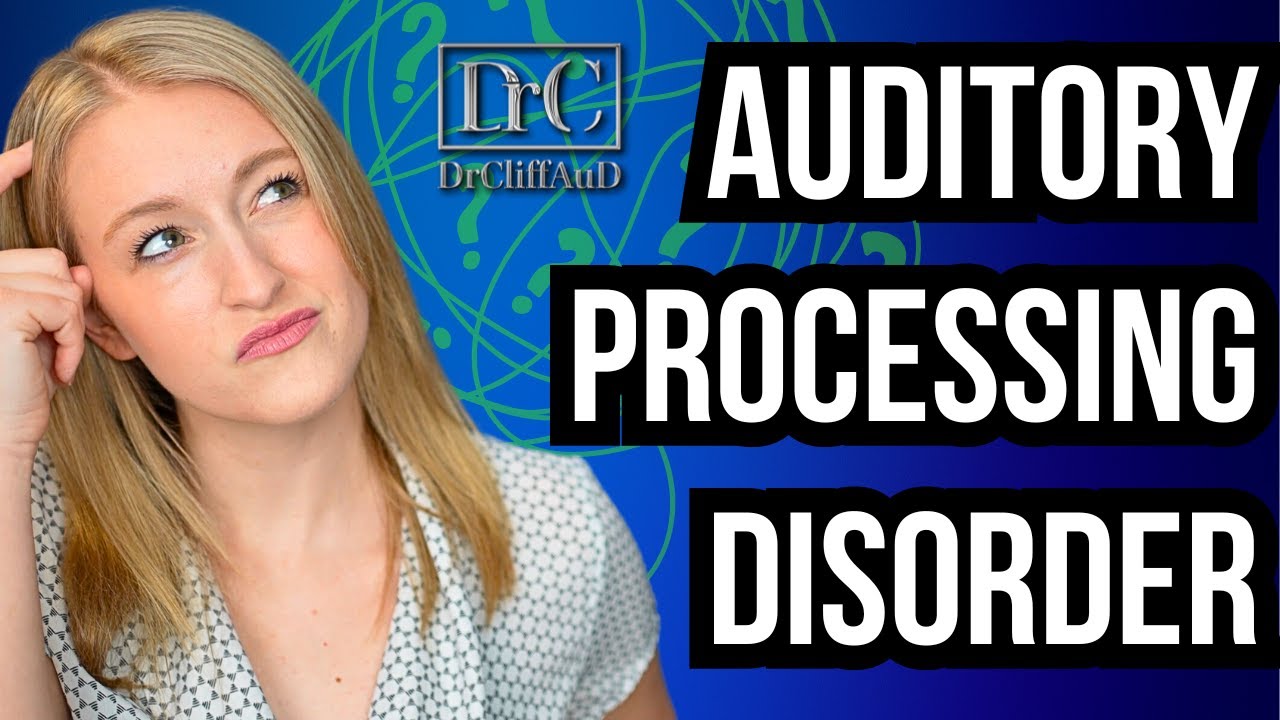Processing disorders touch the lives of many, hindering how we understand, interpret, and respond to the world around us. These challenges can manifest in various ways, including Sensory Processing Disorder (SPD), Auditory Processing Disorder (APD), and Visual Processing Disorder (VPD). Grasping these distinctions is crucial for success in managing them.
Sensory Processing Disorder (SPD) is commonly observed in children. Kids with SPD may react unpredictably to sensory input, leading to issues in social situations or everyday activities. From sensory overload at a birthday party to feeling anxious in a crowded grocery store, SPD can deeply affect a child’s confidence and happiness. However, with the right interventions, kids can learn to navigate their environment more comfortably.
Auditory Processing Disorder (APD) presents another hurdle. Individuals with APD struggle to process auditory information, which can lead to frequent misunderstandings in conversations. You might say, “Hey, did you see that movie?” only to have them reply with, “What movie?” Addressing APD requires supportive strategies, whether it’s through speech therapy or classroom accommodations.
Lastly, Visual Processing Disorder (VPD) can interfere with how one reads or comprehends written material. Struggling to connect the dots on paper can be frustrating, especially for students trying to keep up in class. By recognizing VPD, educators and parents can develop tailored reading strategies that better suit these learners.

Common Co-occurring Conditions: Exploring the Intersection with Mental Health
processing disorder often arrive with company, showing up alongside various co-occurring conditions. These can complicate treatment and necessitate an all-encompassing approach.
Take Intermittent Explosive Disorder (IED), for example. Individuals with a processing disorder may lose impulse control, leading to intense outbursts of anger. Battling these emotional swings demands attention and can benefit from behavioral therapy and medications like SSRIs, as discussed on Chiseled Magazine.
Then there’s Conversion Disorder, where neurological symptoms appear without a distinct medical cause, often surfacing from stress or trauma. The intertwining of conversion disorder and processing issues can challenge diagnostic efforts but highlights the need for thorough evaluations.
Some may also observe symptoms resembling Schizophrenia, where medication such as clozapine or olanzapine plays a crucial role. Understanding the boundaries of these conditions emphasizes the need for comprehensive assessments to create effective treatment protocols.

The Impact of Alcoholic Hepatitis on Mental Processing
Chronic alcohol consumption can lead to alcoholic hepatitis, which poses challenges for mental processing. This condition can alter cognitive abilities, causing significant deficits in attention and processing speed. Chronic drinkers might face a brain reshaped by their choices, complicating their journey through recovery.
When someone grappling with alcoholic hepatitis also faces a processing disorder, the cognitive deterioration can be severe. Tackling addiction often becomes the priority, with interventions aimed at addressing both neurological implications and mental health stability.
Research increasingly shows that treating addiction can unlock new pathways to improved mental health. The interconnectedness of processing disorder and alcohol-related issues fuels a need for strategies that address both physical and mental recovery.

Unique Considerations During Pregnancy: Exploring Pregnancy Nose and processing disorder
Pregnancy doesn’t just impact how one feels physically; it can also alter processing abilities. One interesting phenomenon, dubbed “pregnancy nose,” refers to changes in olfactory processing. Some women experience heightened sensitivity or diminished responses to smell, which can amplify anxiety and discomfort, especially for those already facing a processing disorder.
Hormonal shifts during pregnancy can intensify existing processing challenges. An expectant mother’s ability to manage stress and anxiety becomes pivotal as she navigates her journey. Awareness of these changes can empower pregnant women to seek the support they need.
Understanding pregnancy-related effects opens avenues for tailored mental health strategies. Expectant mothers can better cope with sensory challenges by leveraging knowledge and community resources.

Signs of Potential Mental Breakdown: When to Seek Help
Knowing when a mental breakdown is approaching can spell the difference between escalating distress and successful intervention. Recognizing symptoms such as overwhelming stress, loss of focus, irritability, or emotional numbness is essential.
Taking practical steps can also build resilience. Engaging in mindfulness practices like meditation or yoga can reduce anxiety while building emotional capacity. Seeking support from trusted friends or professionals trained in processing disorder proves invaluable.
Early intervention often leads to brighter outcomes. Those facing processing disorder must be proactive in managing signs of deterioration to maintain mental stability and overall well-being.

Pathological Transformation: Recovery and Management Strategies
The journey toward healing from processing disorder involves multiple paths. Cognitive Behavioral Therapy (CBT) can help individuals develop effective coping mechanisms, equipping them with tools to manage symptoms productively.
Incorporating mindfulness and meditation can also enhance focus and reduce anxiety. These techniques encourage emotional regulation, building confidence in how one approaches daily challenges.
For those with sensory processing disorder, Sensory Integration Therapy stands out as a beneficial approach. Gradually exposing individuals to sensory stimuli helps them acclimate, easing their responses and improving overall comfort. Group support can be vital as well, fostering connection and shared experiences on this recovery journey.
As innovative therapies, such as virtual reality, gain traction, they hold promise in reshaping treatment experiences. Each journey with processing disorder is distinct and rich with both challenges and growth opportunities.
Conclusion
Understanding processing disorder equips people to break down barriers on the path to healing. As we navigate these complexities, fostering community support, cutting stigma, and embracing innovative treatments can pave the way to a brighter future. Whether through emotional resilience or building connections, the journey is manageable, empowering individuals to strive for greatness.
Embracing this knowledge serves not just as information but as a call to action. Because let’s face it – life’s too short to feel trapped by processing challenges. Let’s smash those barriers and celebrate every victory on the road to personal empowerment!
processing disorder: A Journey Through Understanding Challenges
Unpacking processing disorder
processing disorder can feel like a puzzling maze for those affected and their families. These conditions impact how individuals understand and react to information, often giving rise to seemingly unrelated challenges in everyday life. For instance, someone may struggle to follow directions or sort through varying bits of information. Interestingly, in much the same way that cold Sores are N’t contagious,( the stumbles found in processing disorder are unique to the individual and not transmitted like common ailments. This distinctiveness can sometimes breed misconceptions about the disorder, causing added frustration and confusion for those navigating their daily lives.
Did You Know?
If you ever wondered about surprising facts, try this one on for size: processing disorder can affect people of all ages, from young children who might struggle in school to adults facing challenges in their workplace. It’s shocking how the brain can twist and turn information—just like how many gamers might find Genshin Impact apple pie() to be as tricky to decipher as strategies in their favorite games. And speaking of brains, you might not realize that yellow sperm can signify different things in health discussions, much like how processing issues could indicate broader neurological challenges. No matter the age, the path to understanding one’s processing disorder can seem like an , where twists leave you pondering what’s real.
Links to Real-Life Examples
Getting a glimpse into real-life cases always helps put things in perspective. Take the story of Lil Jj;(😉 he faced his fair share of challenges before rising to fame, much like many who deal with processing disorder strive to overcome hurdles in life. It’s a journey rife with determination and grit, yet sprinkled with surprises along the way. While the stakes are high, just like in any thrilling secret service failure,(,) it’s the personal ups and downs that often shape resilience and growth.
So, whether you’re converting meters to feet, as in 187 cm in Feet,( or simply learning about the nuances of processing disorder, remember: understanding is key. The more we share knowledge and experiences, the clearer the path becomes for everyone involved in this journey.



























